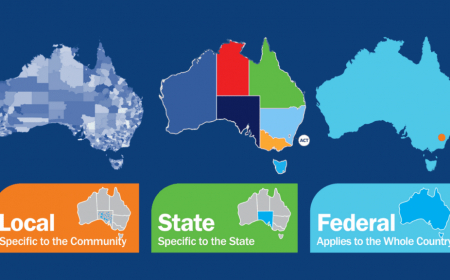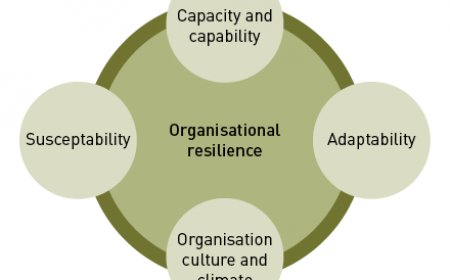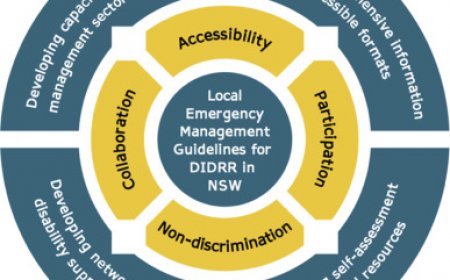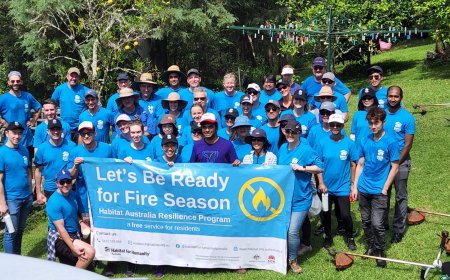Travel & Tourism: Solo Travel Tips for First-Time Explorers
Discover comprehensive solo travel tips designed for first-time explorers. Learn how to plan, stay safe, and make the most of your journey with expert advice and actionable strategies.
Solo travel is more than just a trend; it is an empowering journey that allows individuals to explore the world on their own terms. For first-time explorers , embarking on a solo adventure can be both exhilarating and daunting. The freedom to craft your itinerary, immerse yourself in new cultures, and discover hidden gems at your own pace is unmatched. However, with this freedom comes responsibility. Planning and preparation are crucial to ensuring a smooth and enjoyable experience. In this comprehensive guide, we will delve into essential tips , strategies, and insights tailored specifically for solo travelers who are venturing out for the first time. Whether you’re traveling for leisure, self-discovery, or simply to break away from routine, this article will equip you with the knowledge and confidence to make your solo journey unforgettable.
Why Choose Solo Travel?
Freedom to Explore Without Compromise
One of the most compelling reasons to embark on a solo trip is the unparalleled freedom it offers. Unlike group travel, where decisions must often be made collectively, solo travel allows you to prioritize your preferences. You can wake up early to catch a sunrise, spend hours wandering through a museum, or spontaneously change your plans without needing to consult anyone else. This flexibility ensures that every moment of your journey aligns with your desires.
For instance, if you're visiting Paris, you might choose to spend an entire day exploring the Louvre instead of rushing through it to accommodate someone else’s schedule. Similarly, you could opt for a quiet evening sipping coffee at a riverside café rather than attending a crowded event. The ability to tailor your trip entirely to your liking makes solo travel an incredibly rewarding experience.
Self-Discovery and Personal Growth
Solo travel provides an opportunity for profound self-discovery . Being alone in unfamiliar surroundings forces you to step out of your comfort zone, fostering resilience and adaptability. It encourages introspection and helps you gain a deeper understanding of your strengths, weaknesses, and passions. Many solo travelers return home with a renewed sense of confidence and clarity about their life goals.
Imagine navigating the bustling streets of Tokyo or trekking through the serene landscapes of New Zealand—all by yourself. These experiences challenge you to rely solely on your instincts and resourcefulness. They teach you how to handle unexpected situations, such as missing a train or getting lost in a foreign city. Each hurdle you overcome adds to your personal growth, making you stronger and more self-assured.
Cultural Immersion
When traveling alone, you are more likely to engage with locals and fellow travelers. This interaction opens doors to authentic cultural experiences that might otherwise remain inaccessible. From learning traditional dances in Bali to sharing meals with families in Italy, solo travel enables you to forge meaningful connections and gain a richer appreciation of diverse cultures.
For example, staying in a homestay rather than a hotel can provide insight into local customs and traditions. Participating in community events or festivals allows you to witness firsthand the vibrancy of a culture. Additionally, dining at family-owned restaurants or street food stalls introduces you to regional cuisines that reflect the history and lifestyle of the area.
Overcoming Challenges Builds Resilience
Navigating foreign cities, communicating in different languages, and solving unexpected problems all contribute to building resilience. These challenges not only enhance your problem-solving skills but also teach you to embrace uncertainty with grace. Overcoming such obstacles during solo travel leaves you better equipped to handle life’s uncertainties back home.
Consider the scenario of arriving in a country where you don’t speak the language. Initially, ordering food or asking for directions may seem intimidating. However, as you navigate these situations, you’ll develop creative ways to communicate—whether through gestures, translation apps, or even drawing pictures. These small victories boost your confidence and reinforce your ability to adapt to new environments.
Essential Preparations Before Departure
Research Your Destination Thoroughly
Before setting foot in a new country or city, thorough research is indispensable. Familiarize yourself with the local customs, traditions, and etiquette to avoid unintentional faux pas. Understanding the political climate, safety concerns, and healthcare facilities in your destination is equally important. Additionally, gather information about popular attractions, local cuisines, and transportation options to create a well-rounded itinerary.
For instance, if you’re planning a trip to Morocco, knowing that tipping (called baksheesh ) is customary in many services will help you navigate social interactions smoothly. Researching religious practices, such as prayer times and dress codes, ensures that you show respect for local beliefs. Moreover, identifying safe neighborhoods and avoiding areas prone to crime enhances your overall security.
Create a Realistic Budget
Financial planning is a cornerstone of successful solo travel. Start by estimating costs for accommodation, food, transportation, activities, and emergencies. Use online resources like travel blogs, forums, and budget calculators to get an accurate picture of expenses. Remember to allocate funds for unforeseen circumstances, such as flight delays or medical emergencies.
A realistic budget should include daily expenses such as meals, public transport fares, entrance fees to attractions, and souvenirs. Factor in currency exchange rates and potential ATM withdrawal fees when using international cards. Apps like Trail Wallet or Mint can help track your spending in real-time, ensuring you stay within your financial limits.
Pack Smart and Light
Packing efficiently is an art that every solo traveler must master. Focus on bringing versatile clothing items that suit the weather and culture of your destination. Prioritize essentials such as a reliable backpack, comfortable walking shoes, a portable charger, and a universal adapter. Avoid overpacking, as lugging heavy luggage can hinder mobility and detract from your overall experience.
To maximize space, roll your clothes instead of folding them and use packing cubes to organize your belongings. Include multi-purpose items like a sarong, which can serve as a beach towel, scarf, or picnic blanket. Don’t forget to pack copies of important documents, medications, and toiletries in case of emergencies.
Secure Necessary Documentation
Ensure that your passport is valid for at least six months beyond your planned return date. Apply for visas well in advance if required by your destination. Make digital copies of important documents, including your passport, visa, travel insurance policy, and emergency contacts, and store them securely online. Carry physical copies as backups.
Additionally, check whether your destination requires proof of onward travel or specific vaccinations. Some countries mandate yellow fever certificates upon entry, so verify these requirements before booking your flights. Keeping all documentation organized in a dedicated folder or app simplifies access during your journey.
Invest in Comprehensive Travel Insurance
Travel insurance is non-negotiable for solo travelers. Look for policies that cover medical emergencies, trip cancellations, lost belongings, and personal liability. Read the fine print carefully to understand what is included and excluded. Having adequate coverage provides peace of mind and financial protection against unforeseen events.
Compare multiple providers to find a plan that suits your needs and budget. Pay attention to coverage limits, deductibles, and exclusions related to high-risk activities like scuba diving or skiing. Ensure that the insurer has a 24/7 helpline and a network of hospitals or clinics in your destination for quick assistance in emergencies.
Safety Tips for Solo Travelers
Stay Connected
Maintaining communication with loved ones is vital when traveling alone. Share your itinerary with family or friends and check in regularly via phone calls, texts, or messaging apps. Consider using location-sharing features to let trusted contacts know your whereabouts in real-time.
Apps like WhatsApp, Telegram, or Google Maps allow you to send updates effortlessly. Schedule regular check-ins, especially when moving between cities or engaging in adventurous activities. Having someone aware of your movements ensures prompt action in case of emergencies.
Trust Your Instincts
Your intuition is a powerful tool while navigating unfamiliar environments. If something feels off—whether it’s a person, place, or situation—trust your gut and remove yourself from the scenario. Avoid risky behaviors, such as walking alone late at night or accepting rides from strangers.
For example, if you feel uneasy about entering a dimly lit alley or interacting with overly persistent vendors, trust your instincts and seek safer alternatives. Developing situational awareness helps you identify potential threats and take proactive measures to mitigate risks.
Blend In With Locals
Standing out as a tourist can make you a target for scams or theft. Dress modestly and adhere to local dress codes to blend in seamlessly. Learn basic phrases in the local language to communicate effectively and show respect for the culture. Observing how locals behave in public spaces can also help you avoid drawing unnecessary attention.
In conservative regions like parts of the Middle East or Southeast Asia, dressing appropriately demonstrates cultural sensitivity and reduces unwanted scrutiny. Carrying a scarf or shawl allows you to cover up quickly when visiting religious sites. Mimicking local mannerisms, such as greeting people politely or queuing patiently, further integrates you into the community.
Secure Your Belongings
Keep your valuables safe by investing in anti-theft gear, such as a money belt or slash-proof bag. Never leave your belongings unattended, even for a brief moment. Use hotel safes to store passports, cash, and other critical items when possible.
Split your money across multiple locations—carry some cash in your wallet, stash extra bills in your shoes, and keep emergency funds in a hidden compartment. Avoid flashing expensive gadgets like cameras or smartphones in crowded areas. Instead, use discreet accessories like phone grips or wrist straps to prevent accidental drops.
Know Emergency Protocols
Familiarize yourself with emergency numbers and procedures in your destination. Save contact details for the nearest embassy or consulate, local hospitals, and police stations. Carry a small first-aid kit and medications for common ailments like headaches or stomach issues.
Download offline maps and emergency apps like RedZone or bSafe for added security. Memorize key phrases in the local language, such as “help,” “police,” or “I need a doctor.” Knowing how to summon assistance quickly can make a significant difference in critical situations.
Choosing Accommodation Wisely
Hostels: Social Hubs for Solo Travelers
Hostels are an excellent choice for budget-conscious solo travelers seeking social interaction. They offer dormitory-style rooms and communal spaces where you can meet fellow adventurers. Many hostels organize group activities, such as city tours or pub crawls, making it easier to connect with others.
Look for hostels with good reviews on platforms like Hostelworld or Booking.com. Features like lockers, free Wi-Fi, and breakfast buffets add value to your stay. Female-only dorms or private pods cater to those prioritizing privacy and safety.
Boutique Hotels: A Touch of Luxury
For those who prefer a more upscale experience, boutique hotels provide personalized service and unique design elements. These establishments often cater to individual guests, offering amenities like complimentary breakfast, concierge services, and cozy lounges.
Boutique hotels excel in creating intimate atmospheres, perfect for unwinding after a long day of exploration. Their central locations make accessing major attractions convenient. Loyalty programs or seasonal discounts can reduce costs significantly.
Vacation Rentals: Home Away From Home
Platforms like Airbnb and Vrbo allow you to rent private apartments or houses, providing a homely atmosphere. Vacation rentals are ideal for longer stays or travelers who value privacy and independence. They typically come equipped with kitchen facilities, enabling you to prepare your meals and save money.
Choose listings with high ratings and detailed descriptions. Verify house rules regarding pets, smoking, or noise levels to ensure compatibility. Direct communication with hosts clarifies expectations and fosters positive relationships.
Eco-Lodges: Sustainable Stays
If environmental sustainability is important to you, consider staying at eco-lodges. These accommodations focus on minimizing their ecological footprint while offering immersive nature experiences. Eco-lodges are often located in remote areas, allowing you to disconnect from urban life and reconnect with nature.
Features like solar panels, rainwater harvesting systems, and organic gardens highlight their commitment to conservation. Activities like guided hikes, wildlife watching, or tree planting deepen your connection with the environment. Supporting eco-friendly businesses contributes positively to global efforts toward sustainability.
Navigating Transportation Options
Public Transport: Affordable and Convenient
Public transportation systems, such as buses, trains, and subways, are cost-effective ways to get around most cities. Purchase prepaid cards or passes for seamless travel and familiarize yourself with routes and schedules beforehand. Always keep small denominations of local currency handy for fares.
Apps like Citymapper or Moovit simplify navigation by providing real-time updates on arrivals, departures, and disruptions. Validate tickets properly to avoid fines. Respect local norms, such as giving up seats for elderly passengers or standing aside for commuters exiting vehicles.
Ride-Sharing Apps: Modern Solutions
Ride-sharing services like Uber, Grab, or Lyft have revolutionized urban mobility. Download these apps before arriving at your destination to ensure easy access to reliable transportation. Compare prices across platforms to find the best deals.
Verify driver identities and vehicle details before boarding. Share ride details with trusted contacts for added safety. Opt for cashless payments to streamline transactions and maintain records of your journeys.
Renting Vehicles: Freedom to Roam
Renting a car or scooter grants you the flexibility to explore off-the-beaten-path destinations. Ensure you have an international driving permit (IDP) if required and verify rental terms regarding fuel, mileage, and insurance. Practice defensive driving techniques and adhere to local traffic laws.
Inspect vehicles thoroughly for scratches or damages before signing contracts. Refuel tanks completely before returning rentals to avoid additional charges. Familiarize yourself with road signs, speed limits, and parking regulations to minimize inconveniences.
Walking and Cycling: Eco-Friendly Choices
Exploring on foot or by bicycle not only reduces your carbon footprint but also allows you to soak in the sights and sounds of your surroundings. Many cities offer bike-sharing programs or guided walking tours, enhancing your exploration experience.
Wear comfortable footwear and carry water bottles to stay hydrated. Stick to designated paths and obey traffic signals. Rent bikes from reputable providers and inspect brakes, tires, and gears before setting off. Enjoy the slower pace and appreciate architectural details or natural beauty along the way.
Dining Alone: Embracing Culinary Adventures
Street Food: Authentic Flavors
Sampling street food is one of the highlights of solo travel. Street vendors often serve delicious, affordable dishes that reflect the local cuisine. Look for stalls with long queues, indicating popularity and freshness. Be cautious about hygiene practices and opt for cooked foods to minimize health risks.
Try iconic snacks like tacos al pastor in Mexico, pad thai in Thailand, or falafel wraps in Israel. Engage with vendors to learn about ingredients and preparation methods. Capture photos respectfully and express gratitude for their hospitality.
Fine Dining: Indulging in Gourmet Experiences
Treat yourself to a fine dining experience at least once during your trip. Reserve a table at renowned restaurants to savor exquisite dishes crafted by talented chefs. Don’t hesitate to dine solo—even Michelin-starred establishments welcome single diners.
Dress appropriately and arrive punctually to honor reservations. Savor each course slowly, appreciating presentation and flavors. Strike up conversations with staff or fellow patrons to enrich your mealtime memories.
Cooking Classes: Hands-On Learning
Participate in cooking classes to learn how to prepare traditional dishes from expert instructors. These workshops often include market visits and ingredient tastings, offering a holistic culinary experience. Plus, they’re a great way to meet fellow food enthusiasts.
Book sessions in advance and confirm dietary restrictions or allergies. Take notes diligently and ask questions freely. Replicate recipes back home to relive your travels and impress friends and family with newfound skills.
Picnics: Simple Pleasures
Pack a picnic basket with local delicacies and head to a scenic spot, such as a park or beach. Enjoying a leisurely meal outdoors allows you to relax and appreciate the beauty of your surroundings.
Select fresh produce, artisanal cheeses, and baked goods from nearby markets. Bring blankets, utensils, and napkins for convenience. Invite chance encounters with friendly locals or fellow picnickers to share stories and laughter.
Making the Most of Your Itinerary
Balance Structure and Spontaneity
While having a rough itinerary helps keep you organized, leave room for spontaneity. Allow yourself the flexibility to deviate from your plan if something intriguing catches your eye. This balance ensures that your trip remains exciting and unpredictable.
Allocate mornings for planned activities and afternoons for impromptu adventures. Keep backup options ready in case initial plans fall through. Document spontaneous moments creatively through sketches, poems, or voice memos.
Prioritize Must-See Attractions
Identify iconic landmarks, museums, and natural wonders that define your destination. Allocate sufficient time to visit these sites, but don’t rush through them. Take your time to absorb the history, architecture, and ambiance each location has to offer.
Purchase skip-the-line tickets online to save time and energy. Hire knowledgeable guides or download audio tours for deeper insights. Reflect on personal connections or emotions evoked by these places to enhance your appreciation.
Explore Hidden Gems
Venture beyond tourist hotspots to uncover hidden gems known only to locals. Wander through lesser-known neighborhoods, browse independent boutiques, and seek recommendations from residents. These discoveries often lead to the most memorable moments of your trip.
Engage with shopkeepers, baristas, or artisans to uncover secret spots. Follow graffiti trails, attend underground concerts, or participate in quirky festivals. Embrace serendipitous finds and cherish the uniqueness they bring to your journey.
Document Your Journey
Capture your adventures through photography, journaling, or vlogging. Documenting your experiences not only preserves memories but also allows you to share your story with others. Invest in quality equipment, such as a DSLR camera or GoPro, to elevate your storytelling.
Develop a consistent style or theme for your content. Edit photos thoughtfully and write captions that convey emotions authentically. Share snippets on social media responsibly, respecting privacy and copyright laws.
Best Nearby Attractions
When embarking on a solo journey, exploring nearby attractions is one of the most rewarding aspects of your trip. These destinations not only offer breathtaking views and unique experiences but also allow you to immerse yourself in the local culture. Below, we provide detailed descriptions of some of the top attractions near popular travel destinations.
1. Iconic Landmarks
Iconic landmarks are often the heart of any destination. Whether it's the Eiffel Tower in Paris, the Statue of Liberty in New York, or the Taj Mahal in India, these sites symbolize the essence of their respective cities or countries. For example, visiting the Eiffel Tower offers panoramic views of Paris from its observation decks. It’s best to book tickets online in advance to avoid long queues. Similarly, the Taj Mahal in Agra is a UNESCO World Heritage Site that requires early morning visits to witness the marble monument bathed in soft sunlight.
2. Natural Wonders
Nature lovers will find solace in exploring natural wonders such as national parks, waterfalls, and beaches. The Grand Canyon in Arizona, USA, is a must-visit for its awe-inspiring vistas and hiking trails. For those seeking tranquility, Banff National Park in Canada offers pristine lakes like Lake Louise and Moraine Lake, surrounded by towering mountains. Don’t forget to pack sturdy hiking boots and weather-appropriate clothing when visiting these outdoor gems.
3. Historical Sites
History buffs will appreciate ancient ruins and historical monuments that tell stories of civilizations past. The Colosseum in Rome takes you back to the days of gladiators and emperors, while Machu Picchu in Peru reveals the mysteries of the Incan Empire. Guided tours are highly recommended for deeper insights into the significance of these sites. Additionally, many historical sites have strict rules about photography and touching artifacts, so be sure to follow guidelines respectfully.
4. Cultural Hubs
Cities rich in art and culture, such as Florence, Kyoto, or Barcelona, boast museums, galleries, and architectural marvels. The Uffizi Gallery in Florence houses masterpieces by Botticelli and Michelangelo, making it a paradise for art enthusiasts. Meanwhile, Gaudí’s Sagrada Família in Barcelona combines Gothic and Art Nouveau styles in a stunning display of creativity. Check opening hours and ticket availability before planning your visit.
5. Hidden Gems
While iconic attractions draw crowds, hidden gems offer quieter yet equally captivating experiences. For instance, the Blue Lagoon in Iceland provides a geothermal spa experience amidst volcanic landscapes. Alternatively, explore the narrow alleys of Chefchaouen , Morocco’s blue-painted city, where every corner feels like a postcard come to life. Engaging with locals can lead you to these lesser-known treasures.
Best Nearby Restaurants
Food plays a pivotal role in shaping your travel experience, and dining at exceptional restaurants allows you to savor authentic flavors and indulge in culinary delights. Here are some standout dining spots across various destinations:
1. Fine Dining Experiences
For an unforgettable gastronomic adventure, consider fine dining establishments renowned for their exquisite cuisine and ambiance. Noma in Copenhagen, Denmark, consistently ranks among the world’s best restaurants, offering innovative Nordic dishes crafted using seasonal ingredients. Closer to home, Le Bernardin in New York City specializes in seafood dishes that tantalize the taste buds with their freshness and presentation.
2. Local Favorites
To truly understand a destination’s culinary identity, dine at local eateries frequented by residents. In Bangkok, Thailand, Jay Fai serves up Michelin-starred street food like crab omelets and drunken noodles in a humble setting. Similarly, La Boqueria Market in Barcelona lets you sample fresh produce, cured meats, and tapas straight from vendors’ stalls.
3. Vegetarian and Vegan Options
With plant-based diets gaining popularity worldwide, many cities now cater to vegetarians and vegans. Farm Spirit in Portland, Oregon, offers a multi-course tasting menu featuring locally sourced vegetables and grains. In Ubud, Bali, Zest Ubud combines Indonesian flavors with vegan twists, serving dishes like jackfruit rendang and tempeh satay.
4. Rooftop Dining
Enjoying a meal with a view elevates the dining experience. Cé La Vi in Singapore sits atop Marina Bay Sands, providing sweeping skyline views alongside Asian-inspired fusion dishes. Another option is Skyline Restaurant & Bar in Queenstown, New Zealand, where you can relish gourmet meals while gazing at the Remarkables mountain range.
5. Unique Atmospheres
Some restaurants stand out not just for their food but also for their distinctive atmospheres. The Rock in Zanzibar, Tanzania, perches on a coral rock formation overlooking the Indian Ocean, creating a romantic and serene environment. On the other hand, Dinner in the Sky operates in multiple locations globally, suspending diners high above ground for a thrilling dining experience.
Weather
Understanding the weather patterns of your chosen destination is crucial for packing appropriately and ensuring comfort throughout your trip. Below, we break down seasonal variations and tips for different climates:
1. Tropical Climates
Destinations like Bali, Thailand, and Costa Rica feature tropical climates characterized by warm temperatures year-round and distinct wet and dry seasons. During the rainy season (typically May to October), expect afternoon showers and high humidity. Pack lightweight, breathable fabrics, waterproof gear, and insect repellent. Conversely, the dry season (November to April) boasts sunny days ideal for beach activities.
2. Temperate Climates
Regions such as Europe, parts of North America, and Australia experience four distinct seasons. Spring and autumn are generally mild, making them perfect for sightseeing. Summers can be hot, especially in southern Europe, so carry sunscreen, hats, and sunglasses. Winters may require thermal layers, gloves, and scarves, particularly if you’re visiting snowy areas like the Alps or Canadian Rockies.
3. Desert Climates
Desert regions like Dubai, Morocco, and Arizona present extreme temperature fluctuations between day and night. Days are scorching hot, while nights can become chilly. Opt for loose-fitting clothing made from natural fibers during the day and add a light jacket for evenings. Hydration is key; always carry a reusable water bottle.
4. Polar Climates
Traveling to polar regions like Antarctica or northern Scandinavia demands specialized gear due to freezing temperatures. Insulated jackets, thermal underwear, wool socks, and waterproof boots are essential. Layering is critical to regulating body heat effectively. Also, protect your skin and eyes from harsh winds and UV rays with moisturizers and goggles.
Accessibility
Ensuring accessibility for all travelers, including those with disabilities, is vital for inclusive tourism. Here’s how to navigate transportation links, accommodations, and facilities:
1. Transportation Links
Public transportation systems vary widely depending on the destination. Major cities like London, Tokyo, and New York offer accessible options such as wheelchair ramps on buses and elevators in subway stations. Research ahead of time to identify routes and services catering to mobility needs. Ride-sharing apps like UberWAV (Wheelchair Accessible Vehicles) are available in select locations.
2. Wheelchair Accessibility
Many hotels and tourist attractions now prioritize wheelchair accessibility. Look for properties labeled “ADA-compliant” in the U.S. or similar certifications elsewhere. Verify features like step-free entrances, wide doorways, roll-in showers, and grab bars in bathrooms. Popular sites like the Louvre Museum in Paris and Sydney Opera House in Australia provide ramps and elevators for easy navigation.
3. Facilities for Differently-Abled Travelers
Beyond physical access, consider auditory and visual aids for individuals with sensory impairments. Some museums offer audio guides or sign language interpreters upon request. Service animals are typically permitted in most public spaces, though documentation might be required. Always confirm policies directly with service providers.
How To
Navigating key aspects of your destination requires careful planning and execution. Follow these step-by-step guides to streamline your journey:
1. Booking Tickets
Secure tickets for major attractions well in advance to avoid last-minute hassles. Use official websites or trusted platforms like Viator or GetYourGuide. For example, purchasing skip-the-line passes for the Vatican Museums saves significant time. Double-check cancellation policies and refund options in case plans change.
2. Finding Accommodations
Choose accommodations based on proximity to attractions, budget, and amenities. Filter search results on Airbnb, Expedia, or Booking.com according to preferences like free Wi-Fi, breakfast included, or pet-friendly policies. Read recent reviews to gauge cleanliness, staff friendliness, and overall satisfaction.
3. Navigating Public Transport
Download relevant apps like Google Maps or Moovit to track real-time schedules and routes. Purchase transit cards or passes valid for multiple rides to save money. Familiarize yourself with local etiquette, such as giving up seats for seniors or standing aside for exiting passengers.
4. Managing Currency Exchange
Exchange currency at reputable banks or ATMs rather than airports or street vendors to get better rates. Notify your bank about international travel to prevent card blocks. Carry small denominations for tipping or minor purchases.
Conclusion
Solo travel is a transformative experience that empowers individuals to embrace independence, foster personal growth, and create lifelong memories. By following the tips and strategies outlined in this guide, first-time explorers can confidently embark on their journeys, knowing they are well-prepared for whatever lies ahead. From researching destinations and securing accommodations to navigating cultural nuances and overcoming challenges, this comprehensive resource equips you with the tools needed to thrive as a solo traveler. Embrace the freedom, immerse yourself in new experiences, and let the world unfold before you—one unforgettable adventure at a time.
10 FAQ’s with Answers
-
Is solo travel safe for women?
- Yes, with proper precautions and awareness, solo travel can be safe for women.
-
What should I pack for a solo trip?
- Pack versatile clothing, essential gadgets, and travel documents.
-
How do I meet people while traveling alone?
- Stay in social accommodations, join group tours, and use networking apps.
-
Do I need travel insurance?
- Absolutely, travel insurance is crucial for emergencies and unforeseen events.
-
Can I rent a car as a solo traveler?
- Yes, provided you have the necessary permits and meet rental requirements.
-
How do I handle language barriers?
- Learn basic phrases, use translation apps, and rely on gestures.
-
What are the benefits of solo travel?
- Freedom, self-discovery, cultural immersion, and resilience-building.
-
How do I stay connected with family?
- Use messaging apps, share your location, and check in regularly.
-
Where should I eat alone?
- Try street food stalls, fine dining restaurants, or take part in cooking classes.
-
How do I manage my budget?
- Plan expenses, track spending, and prioritize needs over wants.
What's Your Reaction?
 Like
0
Like
0
 Dislike
0
Dislike
0
 Love
0
Love
0
 Funny
0
Funny
0
 Angry
0
Angry
0
 Sad
0
Sad
0
 Wow
0
Wow
0











































